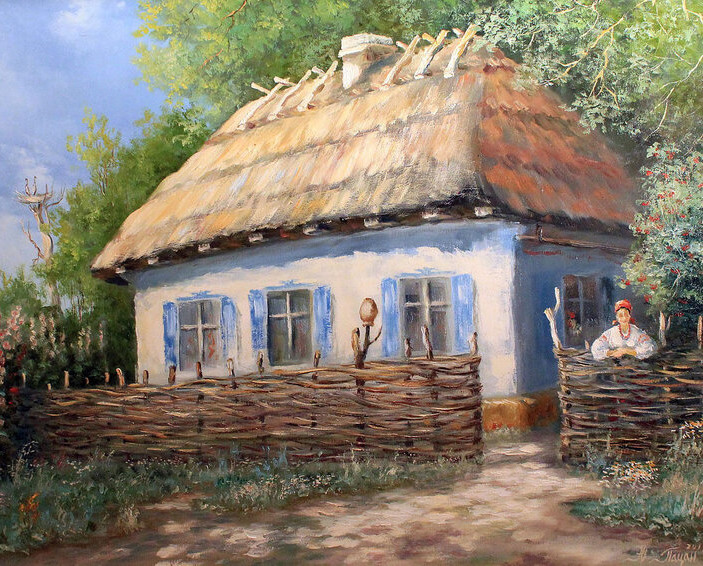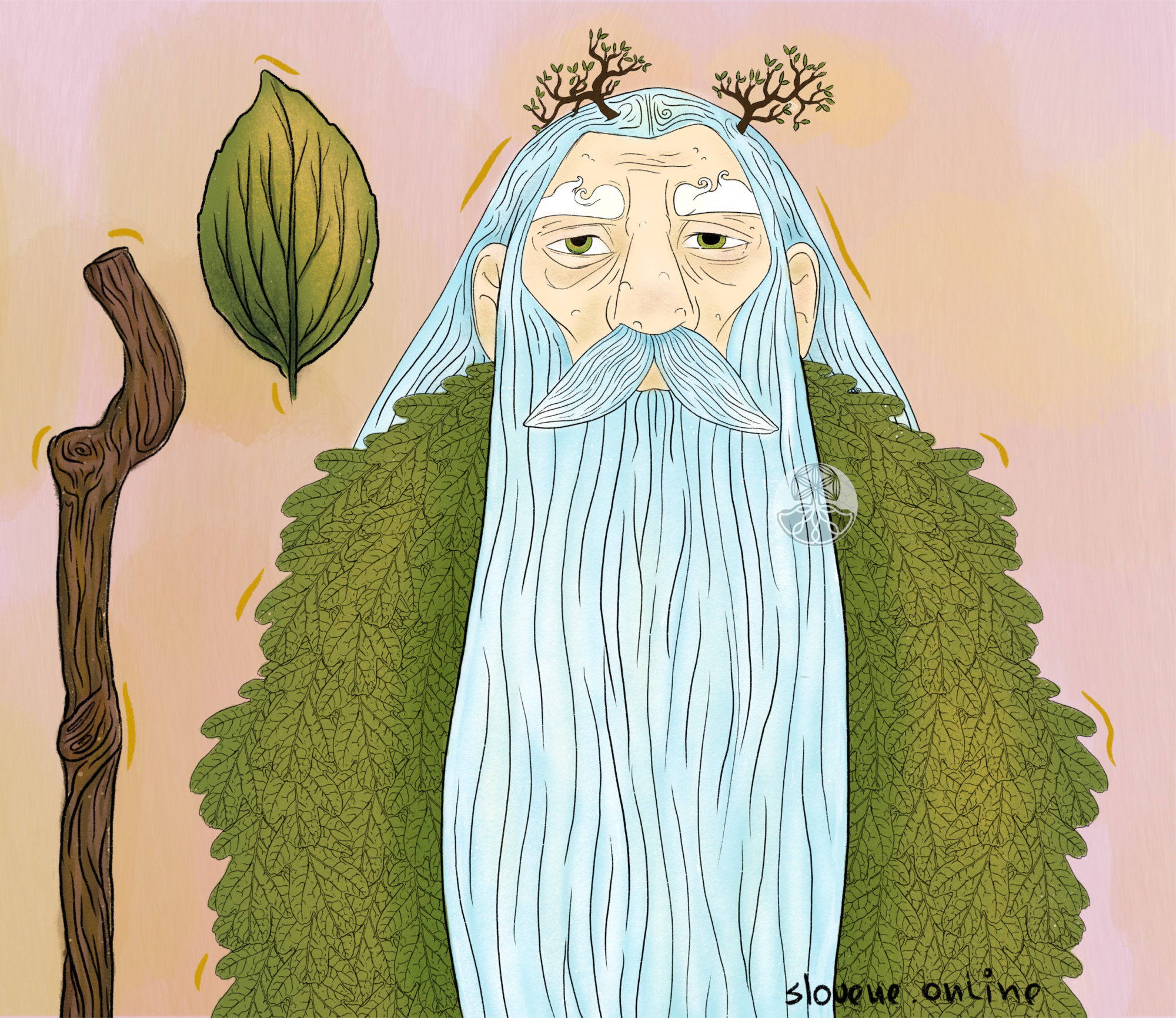The bat among the ancient Slavs was closely associated with evil spirits. Lusatian Sorbs believed it was a vampire, and the Poles – a flying evil spirit or the soul of a sleeping witch. Poles also believed that witches could take tree leaves under their armpits and turn them into bats. The Belarusians thought that a walking dead sorcerer appeared in the form of a bat. In Russia, the bat was often called Kikimora, and it was a bad omen if it flew inside a house.
ꏍ
However, due to blindness, the bat sometimes served as a talisman against the evil eye. For this, Bulgarians and Macedonians sewed the wing, head or skin of an animal into their clothes. The Poles hung bat up in the stable to guard their horses from the evil eye or nailed it to the door as protection from witches. The same way, Lusatian Sorbs protected themselves from illness and misfortune.
ꏍ
But before making a talisman out of a bat, how, I wonder, was it caught? 😉
ꏍ
To be continued…
ꏍ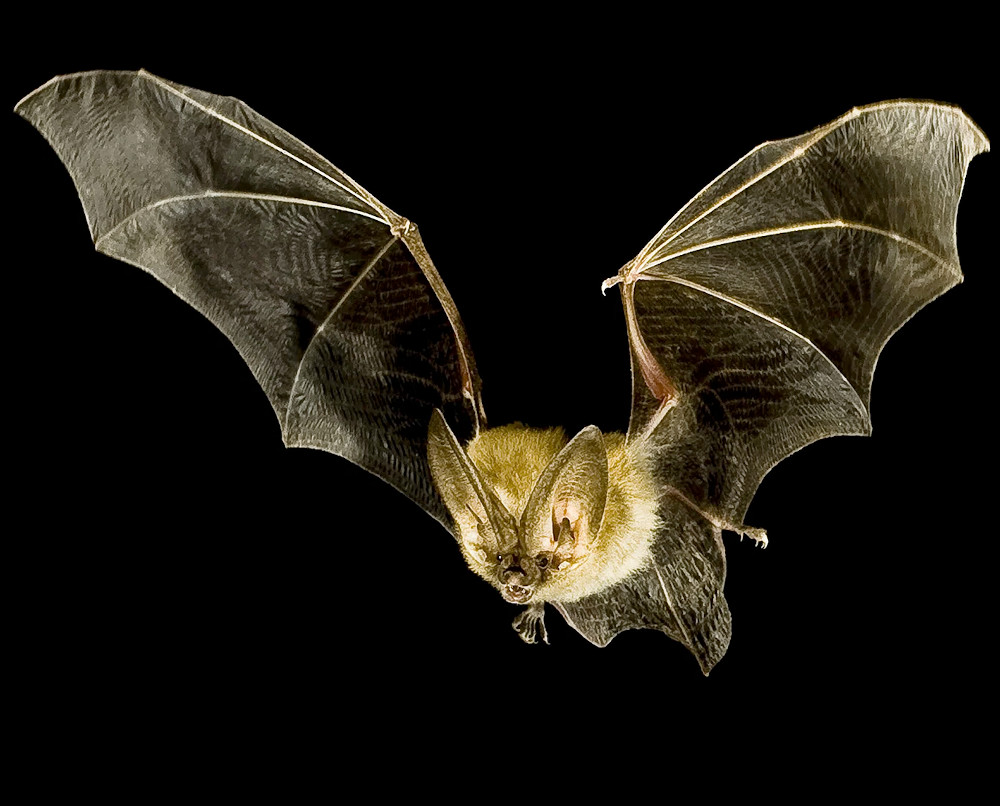
Slavic yard as a place for rituals
Slavic people performed many rituals in the yard, to ensure the well-being of their home and household. In Serbia, during Kolyada (коледа) celebrations, people danced around a bread loaf, fibers for distaff and a piece of dry meat laid in the middle of the yard – imitating a struggle with invisible evil forces, expelling them from all buildings and corners of the house. Russians in Vladimir region on the day of the first pasture of cattle drove an aspen stake in the middle of the yard to protect cattle from misfortunes and diseases during grazing. Ukrainians, during the wedding, placed “dezha” (a wooden tub for sourdough bread preparation) in the middle of the yard and walked a young couple around it.
ꏍ
The ritual of “warming the dead” was widespread in southern Russia. During celebrations around winter solstice, people burned huge bonfires in the middle of the yard, believing that they “warm” the souls of their ancestors who wander around their homes at this time. In Polesie region, during the Rusalia week, the mothers of the dead girls took out clothes for them into the yard, waiting for the deceased daughter to appear in a form of rusalka. And if the clothes remained intact, then it was believed that their daughter-rusalka did not come.
ꏍ
What other rituals performed in the yard do you know?
ꏍ
More interesting facts can be found in: “Slavic Antiquities” – encyclopedic dictionary in 5 volumes by Institute for Slavic Studies of the Russian Academy of Sciences.
Artist: Ivan Aivazovsky
ꏍ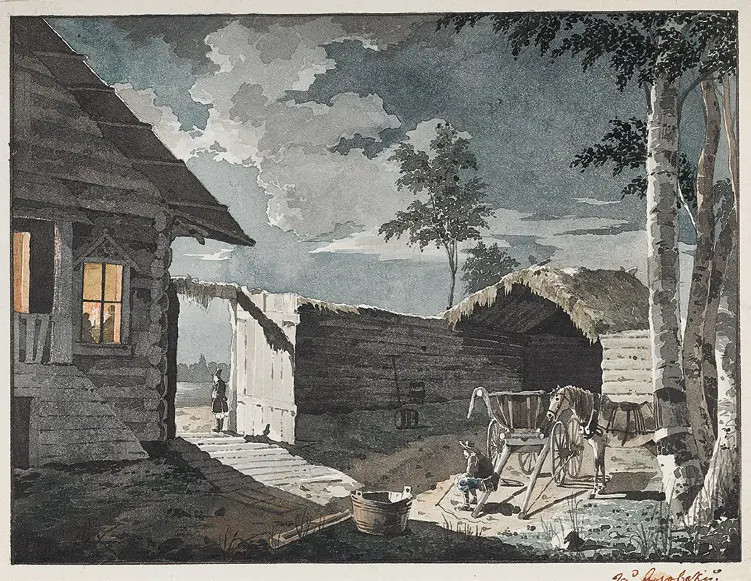
Yard inhabitants in the Slavic tradition
The Russians believed that Domovoi / Dvorovoi (derived from “dvor” – yard) lived in the yard, and that the welfare of livestock and poultry depended on him. He had to be appeased, and even the choice of animals when buying and selling was connected with his supposed “taste.” In the Kostroma region, in order to protect the newly purchased cattle from Dvorovoi, people took bread and salt and went into the yard, where they bowed and said: “Father, Dvorovoi, dear yard keeper, love our cattle.”
ꏍ
In Polish Pomerania, it was believed that after sunset the souls of the dead wander in the yard. Therefore, in the evening, one cannot pour water into the yard, especially on memorial days, otherwise you can pour over the spirits. After sunset, the Kashubs did not take water from the well, did not throw out garbage, did not let the dogs off the leash, did not stand under the roof by the drain during the rain. The Belarusians and Bulgarians did not use the baby bedsheets that were accidentally left in the yard after sunset. And Slavs in the Carpathian region, did not sleep in the yard on Rozygry day (the Monday which followed the Rusalia Week), because at that time the spirits living in the forest circle around the houses and can drag a sleeping person into the forest.
ꏍ
What other mythological tenants or visitors to the yard do you know?
ꏍ
To be continued…
Artist: Ivan Shishkin
ꏍ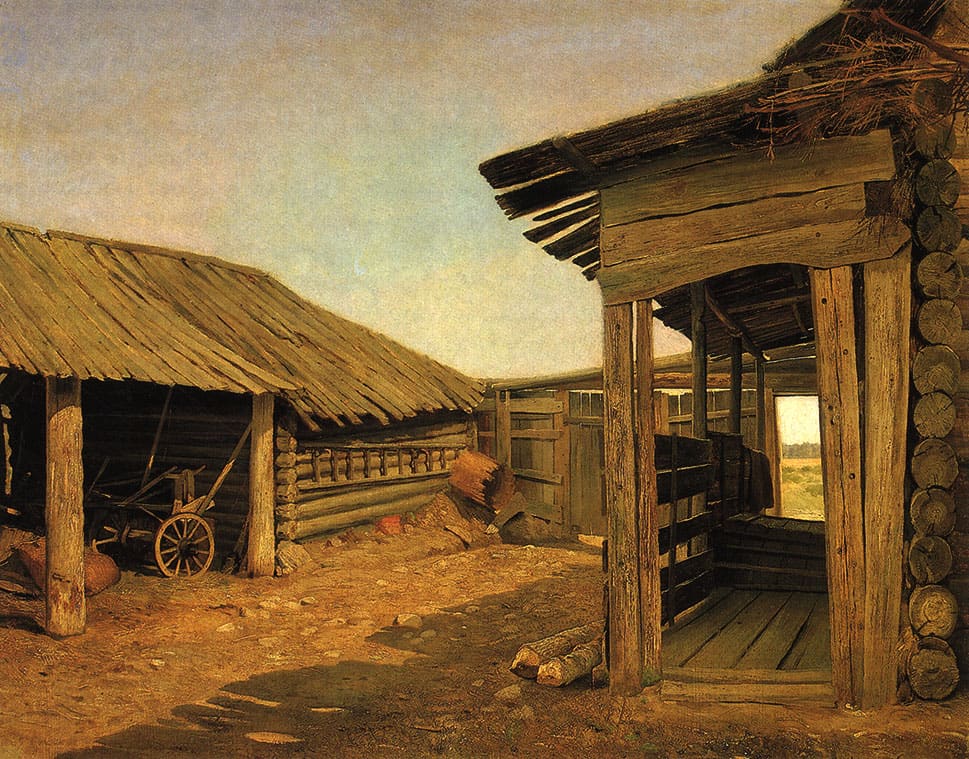
Yard protection in Slavic tradition
To protect the yard from evil spirits, evil eye, curse, etc. Slavs took various magical measures. The Bulgarians, for example, planted elm tree. They believed that then “no evil and no disease can enter the yard, and the house itself will never be empty.”
ꏍ
Slavs of Polesie region made sure that no “bare” branch (without a bark), brought by the wind, was kept in the yard – to prevent it from being “naked” and “empty”. On Kupala they also erected a “pole with bark” in the yard, and put a cow skull on a top, so that the “yard (house) would be rich”.
ꏍ
According to the beliefs of some western and southern Slavs, in order to protect the yard from reptiles and insects, one should run around it with a bell in hand or sweep it before sunset with a new broom. Another way was to fumigate with a smoke and sprinkle with ashes from a fire, in which garbage from all over the yard was collected. To guard the yard from evil forces, salt was also sprinkled along the fence. To defend the barn from the witch who was trying to “steal” the crop, millet was scattered in the yard. And the Russians, in order to protect livestock from the evil eye, hung out a bunch of old bast shoes in the yard, thus diverting the attention of a dangerous person from animals.
ꏍ
What protection, in your opinion, is the most effective?
ꏍ
To be continued…
Artist: Vladimir Zhdanov
ꏍ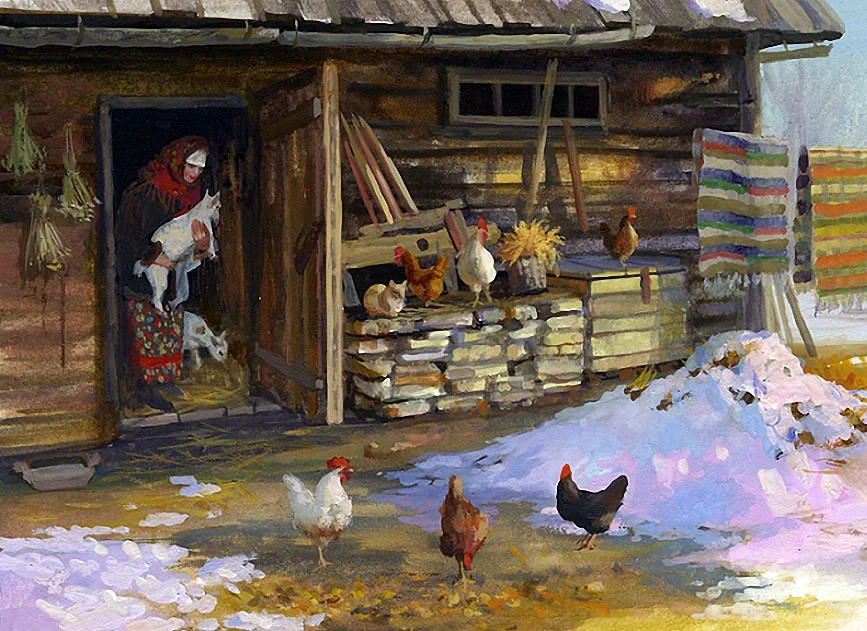
The yard in the Slavic tradition
The yard (or courtyard) of the ancient Slavs had mystical properties. Russian peasants, when they handed over livestock to the buyer, made sure that dirt, manure, straw or wood chips from the yard did not stick to the hooves of the animal, and that the buyer did not take anything of the kind with him. Because success in cattle breeding was believed to be carried over from one yard to another in this way.
ꏍ
As the yard adjoins the “outside” world, in Slavic tradition it is considered some sort of a transition space between the “native” and the “alien” worlds. Therefore, it can be dangerous for the household members, especially at certain times of the day and in certain calendar periods and dates. A person outside the walls of the house (as well as in the yard) is in danger from demonic spirits, the souls of the dead, and people with an “evil” eye, who could be just passing by. According to Mazur beliefs, sorcerers and witches could leave or bury various objects in the yard in order to curse the owners. For example, a hair mat (kołtun), which caused diseases and other misfortunes.
ꏍ
Did your ancestors use any special methods to protect the yard?
ꏍ
To be continued…
Artist: Yuri Patsan
ꏍ